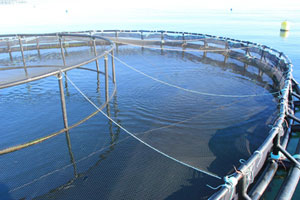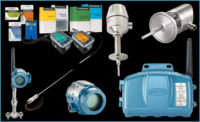
|
| Every fish pen requires 120 nets, each with its own tag number. Bigfoot CMMS keeps track of the maintenance on the nets, production equipment and transportation vehicles. Source: Smartware Group. |
Snow Island is a Nova Scotia-based salmon producer distinguished by its commitment to the environment and sustainable farming practices for raising salmon from egg to plate. The company gives its salmon extra room to grow, maintaining a 98.5 percent volume of water to 1.5 percent of fish in its pens and nets. And while many other operations house one million-plus fish per farm, Snow Island farms contain only 500,000.
“We want to maintain a healthy environment for our fish. Sustainability is the basis for our decision-making,” says Bryan Bosien, marine operations manager at Snow Island. That commitment to the environment has led the company to adopt policies such as keeping farms 10 kilometers away from any wild salmon rivers, maintaining a distance of three kilometers between its farms and avoiding whale or bird migration routes when setting up pens.
To help meet all these demands and more, Snow Island secured a computerized maintenance management system called Bigfoot CMMS from Smartware Group to track everything from ID tags on fish nets to certifications for boat pilots.
Prior to using CMMS, the company relied on numerous spreadsheets to track maintenance information. “But we had too many spreadsheets,” says Bosien. “Sometimes, people would scratch down what they did on note pads, and those notes had to be transferred to the spreadsheet. Then, one person would edit the spreadsheet on one computer, and someone else would use a different computer, so data was scattered. There was a lot of confusion.”
Bigfoot CMMS is used for managing the cleaning, changing and testing of Snow Island’s extensive array of nets. Typically, the 30 pens that hold the 500,000 fish require 120 nets, each with its own ID tag number. Each pen has a primary net, predator net and top containment net—all of which require testing for break strength to keep the fish safe and prevent their escape into the environment. Using the CMMS, Bosien can track the time when nets are removed from the water, the results of the strength tests and other pertinent data to keep operations running smoothly.
Besides keeping nets in shape, Snow Island, like other fish farms, must perform maintenance on its boats, trucks and production equipment, while also keeping up-to-date information on staff members’ licenses and certifications. When Snow Island installed the software, Bosien’s staff of 12 technicians started generating work orders. Bigfoot began capturing equipment maintenance and repair information, which helped the team monitor maintenance activity at Snow Island’s multiple locations.
“Our operations are spread between Nova Scotia, Prince Edward Island and New Brunswick,” says Bosien. “But at any time, I can log onto Bigfoot and see what’s happening throughout our sites and which work orders are complete. I set up the maintenance schedule and receive an alert when something’s overdue. Then I can give that information to a staff member to follow up to find out if it’s been done, and why or why not.” v
For more information: Brian Coatney, 866-858-7800, ext. 803, brian.coatney@bigfootcmms.com.



